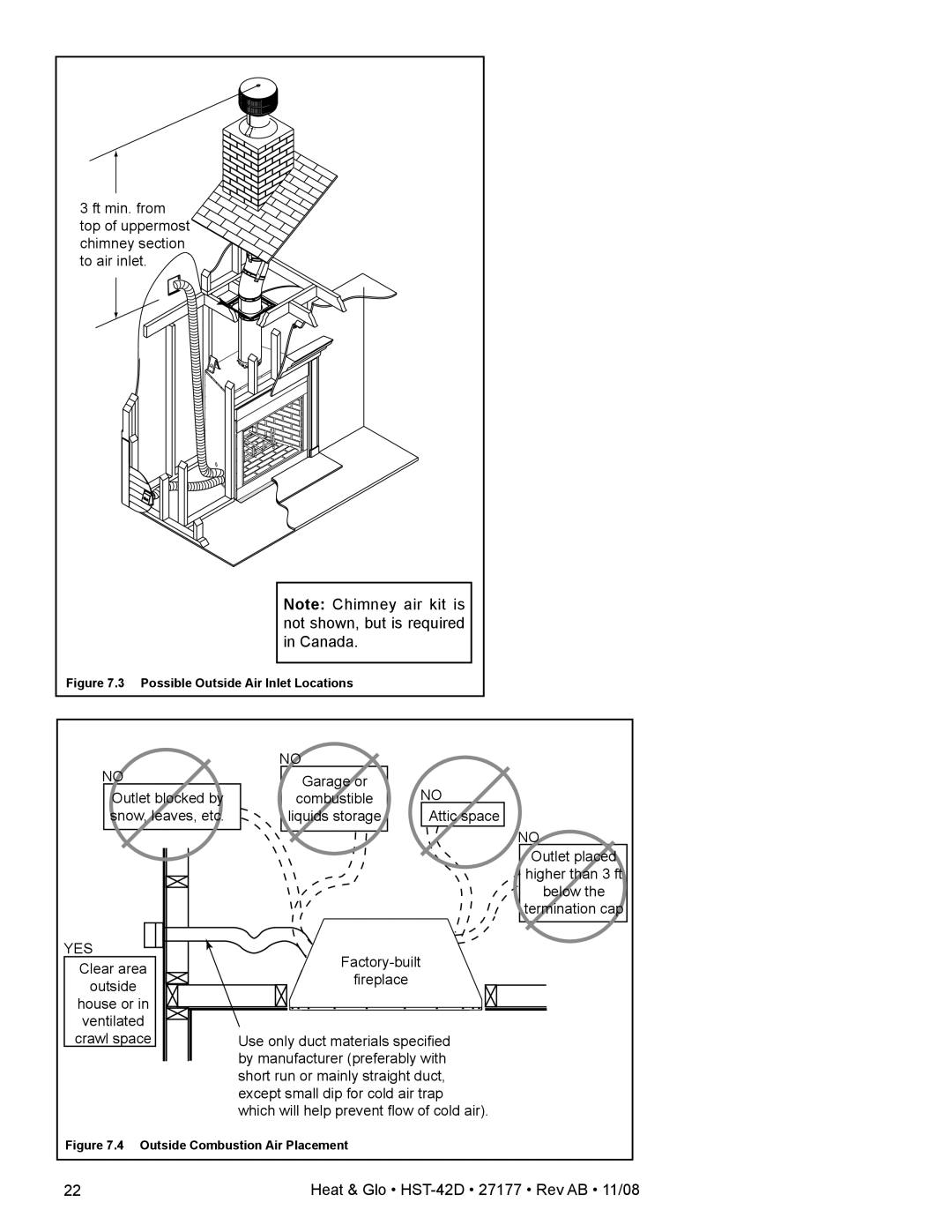
3 ft min. from top of uppermost chimney section to air inlet.
![]()
![]()
![]()
![]() )
)
) |
|
|
) )) |
|
|
) |
|
|
) |
|
|
) |
|
|
) |
|
|
) |
|
|
) |
|
|
)) |
|
|
) |
|
|
) |
|
|
)))) |
|
|
)) |
|
|
))) |
|
|
)) |
|
|
)))))))) |
|
|
) |
|
|
))) |
|
|
)) |
|
|
)) |
|
|
))))))) |
|
|
))) |
|
|
))))))) |
|
|
))) |
|
|
) |
|
|
) |
|
|
) |
|
|
) |
|
|
))))) | ||
) |
| |
|
| )) |
| )) | |
)) |
| |
)))))))))))) |
|
|
Note: Chimney air kit is not shown, but is required in Canada.
Figure 7.3 Possible Outside Air Inlet Locations
NO | NO |
|
Garage or | NO | |
Outlet blocked by | combustible | |
snow, leaves, etc. | liquids storage | Attic space |
NO
Outlet placed
higher than 3 ft
below the
termination cap
YES | ||
Clear area | ||
fireplace | ||
outside | ||
| ||
house or in |
| |
ventilated |
| |
crawl space | Use only duct materials specified | |
| by manufacturer (preferably with | |
| short run or mainly straight duct, | |
| except small dip for cold air trap | |
| which will help prevent flow of cold air). |
Figure 7.4 Outside Combustion Air Placement
22 | Heat & Glo • |
